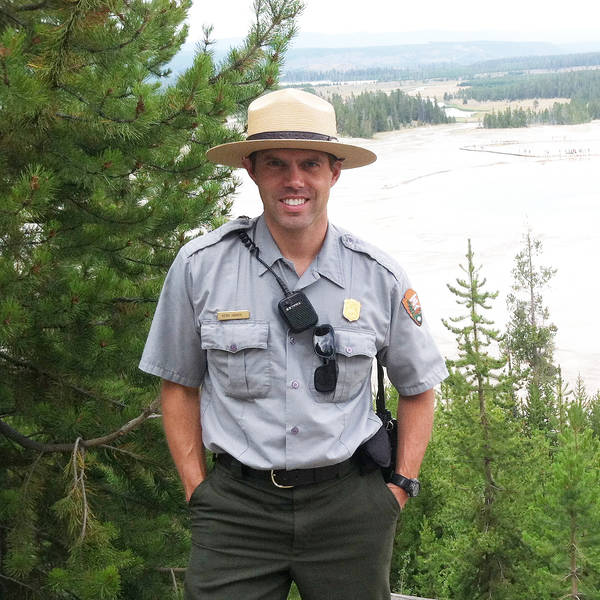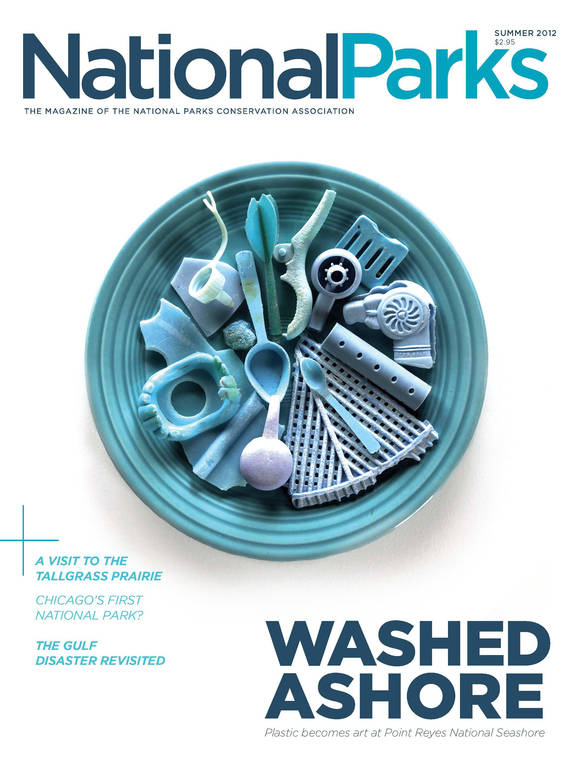Summer 2012
Exiled to Paradise
Kalaupapa National Historical Park celebrates the triumph of the human spirit over Hansen’s disease.
Ambrose T. Hutchison discovered the “dying den˝ on his second day at Kalaupapa in 1879. As Hutchison trod a dirt path in the shade of the coconut palms, a man wearing a white rag over his nose and mouth hurried past. The man pushed a wheelbarrow filled with stained and soiled rags to the entrance of a dilapidated hut, and then in one great heave, dumped the contents out. That’s when Hutchison heard an "agonized moan˝ and realized there was a person in there.
“Hutchison watched in horror as a dying man crawled into the hut and collapsed face down. This “spectacle of inhumanity” filled him with such a sense of foreboding that Hutchison fled. Would he, too, die alone and abandoned? When a figure clothed in black appeared before him, his fate seemed certain. But it wasn’t the grim reaper—it was a priest, wearing gold-rimmed glasses and a stiff, brimmed hat.
“Good morning,” said the priest with a broad smile. “I am Father Damien.”
Thus began a friendship that would change Hutchison’s life forever.
Religious missionaries first mentioned seeing “remediless and disgusting cases” of leprosy, or Hansen’s disease, in the Hawaiian Islands around 1823. Caused by the bacteria Mycobacterium leprae, the disease slowly damages the skin and nervous system, causing sores, decreased sensation, paralysis, loss of fingers and toes, and, back then, death. By 1865, fear of this ancient affliction was so great in Hawai’i that the government signed into law The Act to Prevent the Spread of Leprosy. The legislation allowed authorities to confine “any person alleged to be a leper” and “assist in removing such a person to a place of treatment or isolation.” Patients with mild symptoms were sent to Kalihi Hospital and Detention Center on Oahu; the worst were forced into isolation on the island of Molokai.
With its sandy beaches, misting rainbows, and lush valleys, Molokai’s Kalaupapa Peninsula was a South Pacific paradise. But Hawaiian leaders sent victims of Hansen’s disease here because of its Alcatraz-like inaccessibility, not its beauty. The world’s highest sea cliffs separated the sick from the rest of Molokai; strong ocean currents, heavy surf, and tiger sharks deterred anyone from swimming away.
The first 12 patients arrived in January 1866, and as the rowboat took them from steamship to shore, they were told they’d never see their families again; they would die on Molokai. “Hawaiians are very resourceful people, but the first patients were out of their element as strangers in an unfamiliar place,” says Ka`ohulani McGuire, cultural anthropologist at Kalaupapa National Historical Park. “They were literally spit out onto the land, without any infrastructure, food, water, or clothing.”
Too sick to hunt, farm, or fish, the patients began writing letters to religious institutions. Joseph De Veuster, better known as Father Damien (a Catholic priest from Belgium), had already spent nine years as a missionary on the Big Island when he responded to their cries for help.
He arrived in May 1873. Father Damien knew that serving these abandoned patients would be trying, but nothing prepared him for what he described as “the living cemetery that was Molokai.” Drunkenness, gambling, and theft were rampant, the sickest patients were dumped into the dying den, and dead bodies were discarded into dark ravines, to become food for feral pigs.
Father Damien ministered at a church on the eastern side of the peninsula but also worked as a carpenter, farmer, and teacher. “I am not ashamed to be a manual laborer for the glory of God,” he declared. Assisted by Mormon, Protestant, and Evangelical missionaries, as well as some courageous family members of patients, Father Damien grew crops; built homes, schools, and a reservoir for drinking water; and pleaded with the Hawaiian government and church officials to send more medical supplies, food, and clothing. Though most Board of Health officials kept a safe distance from the patients, Father Damien ate out of the same poi bowl, shared his tobacco pipe with them, and bandaged their wounds. When asked of his devotion, Father Damien said, “My greatest happiness is in serving the Lord in his poor and sick children who are rejected by others.”

National Parks
You can read this and other stories about history, nature, culture, art, conservation, travel, science and more in National Parks magazine. Your tax-deductible membership donation of $25 or more entitles…
See more ›Despite the sense of community Father Damien helped create, death was a daily reality. “There are many empty places in church,” he wrote to his brother in 1880, “but in the cemetery there is hardly any room at all.” Much of Father Damien’s time was spent building coffins, digging graves, and administering last rites. Like the boundless sky above Kalaupapa’s moody clouds, Father Damien urged his patients to identify with the Holy Spirit within, which remained untouched by death or disease.
But even Father Damien had his weaknesses, and eventually his body succumbed to the disease surrounding him. “I am gently going to my grave,” he stated. “It is the will of God and I thank him very much for letting me die of the same disease and in the same way as my lepers.” He died on April 15, 1889, in the company of Mother Marianne Cope and Brother Joseph Dutton, who would continue his work on Kalaupapa.
At its peak, 1,200 patients lived on Kalaupapa, and over the years, more than 8,000 called the peninsula home. Although the advent of sulfone drugs helped treat Hansen’s disease in the 1940s, segregation laws isolating the sick weren’t lifted until 1969. Just 11 years after that, Kalaupapa National Historical Park was created to tell the story of the island’s patients and the heroic volunteers who helped them. “It’s a story about overcoming adversity,” says the park’s superintendent, Steve Prokop. “Our goal is to help people understand how such an injustice happened and should never happen again.”
About the author
-
 Kevin Grange Contributor
Kevin Grange ContributorKevin Grange is the award-winning author of “Wild Rescues: A Paramedic’s Extreme Adventures in Yosemite, Yellowstone, and Grand Teton,” “Lights and Sirens: The Education of a Paramedic,” and “Beneath Blossom Rain: Discovering Bhutan on the Toughest Trek in the World.” He has written for National Parks, Backpacker and the Orange County Register. He has worked as a park ranger and paramedic at Yellowstone, Yosemite and Grand Teton national parks and currently resides in Jackson Hole. Visit him at www.kevingrange.com.



